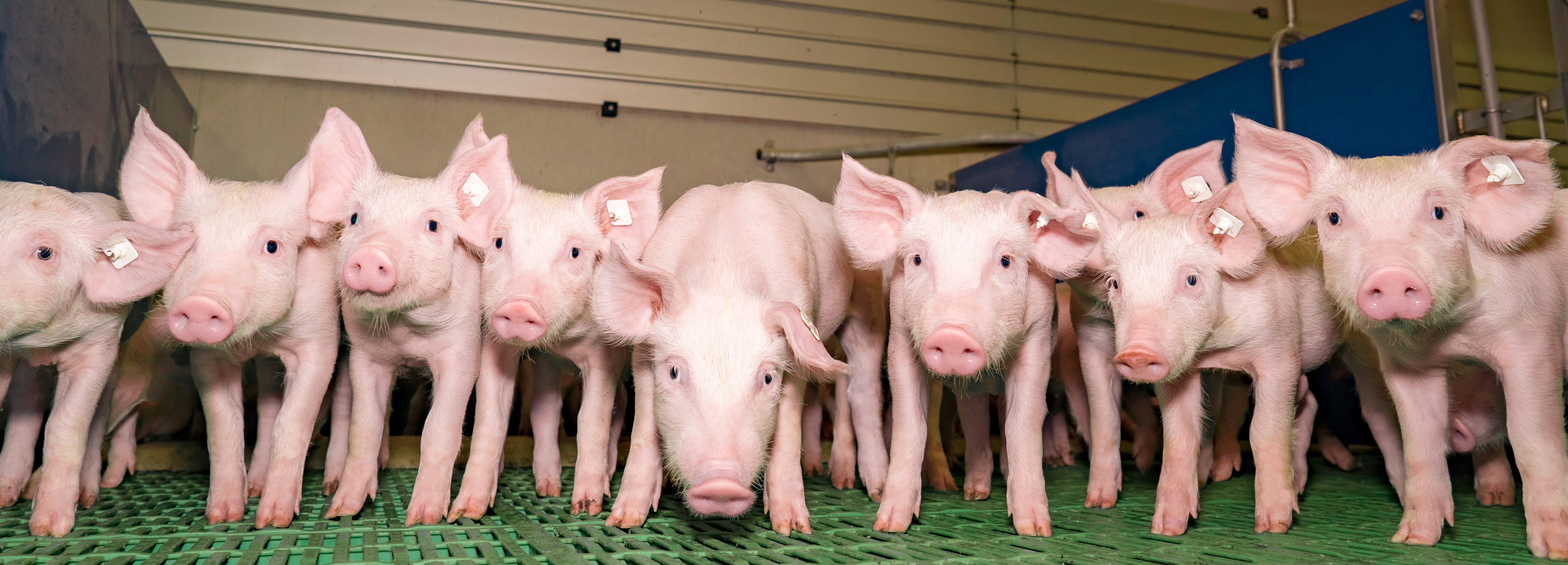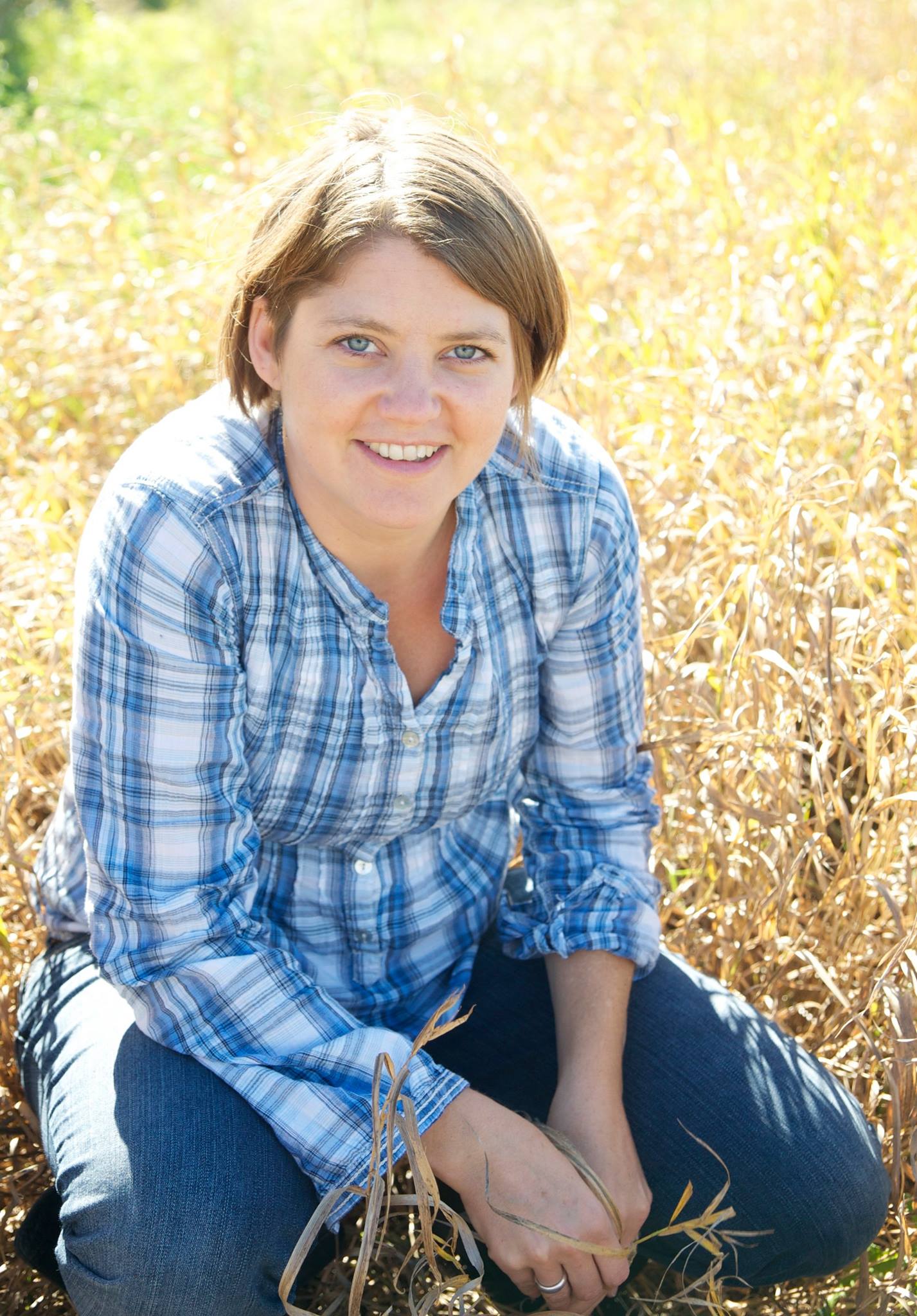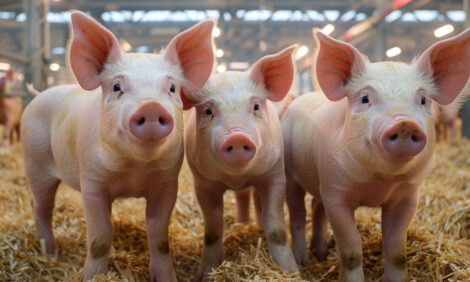



Can genetics curb the carbon footprint of pig production?
Gene editing is being subject to controversial regulation, but could it be a lifeline for an unsustainable pig industry?Over the last 70 years, selection programmes have led to serious improvements in genetics that have improved feed efficiency, carcass weight, number of litters per year and litter size. In terms of reducing the carbon footprint of pig production, further improvements could be realised, but only if legislator and the public make room for modern technology, such as genetic modification and gene editing.
“Pigs have such a nice story because they’re so incredibly efficient,” said Alison Van Eenennaam, Cooperative Extension Specialist, Animal Genomics and Biotechnology, Department of Animal Science, University of California.
An evaluation of selection programmes since the 1930s through to today reveals that the pounds of pigs raised per sow has gone up an incredible amount.
“It used to be 800 lbs per year, and it's now 4,200,” said Van Eenennaam.
“That’s more than a five-fold increase in pounds of pig raised per sow over the last 80 years or so.”
If those numbers aren’t shocking enough, look at the math for the United States alone. The country currently houses somewhere around 6 million pigs. Without genetic improvement, Americans would need to raise 15 million pigs to produce the same amount of meat.

“And that’s just through selection for pretty obvious things, including increased litter size, number of litters per year, increased amount of lean meat per pig, decreased amount of time it needs to get to market, improved efficiency of feed digestion and decreased feed needed to produce a finished pig,” Van Eenennaam added.
“All of those selection objectives are in current breeding programmes, and that’s just basically selecting on naturally occurring genetic variation to enable those improvements.”
These improvements have been greatly assisted by advanced tools that are used to measure parameters, such as feed conversion efficiency. Breeding algorithms have also seen great improvement, said Van Eenennaam.
“Calculating the genetic merit of animals is now helped with tools like genomic selection where we’re actually analysing the DNA of each individual to figure out which pig got the best alleles for efficiencies and the like,” she said.
“It’s just become more sophisticated relative to the old days when we had just a couple of rudimentary measurements being made.”
Since sows struggle to care for larger litters, today’s breeders try to ensure they’re selecting for pigs that not only have big litters, but ones that are able to raise those big litters.
“There’s obviously a trade-off there between each additional piglet and the chances of it surviving,” said Van Eenennaam. “More is not necessarily better,” she continued. “More is better if they survive, but more is not better if they die.”
Beyond traditional breeding programmes, researchers are looking at ways of improving production by tackling environmental impact, disease, and nutritional content using modern technology, such as transgenics and gene editing tools.
In 1999, the University of Guelph researchers in Canada developed “Enviropig”, a pig that was able to digest phytate on its own using genetic modification. The pig’s salivary glands secreted phytase, which allowed them to get phosphate from grains alone, and to excrete about 40 percent less in their manure in the process. This was excellent news, as phosphorous is known to contribute to eutrophication of water bodies, algal blooms and other environmental issues. In 2012, the plug was pulled on the project due to public pushback.

There has also been work to produce heart-healthy pork with high levels of Omega-3 fatty acids.
“That was a transgenic project by the University of Missouri where they introduced a gene that basically improves the Omega-3 fatty acid composition of pork,” said Van Eenennaam. “That’s also sitting on the shelf because there’s no path to market for genetically engineered animals.”
In fact, livestock producers haven’t been able to use genetic modification due to the public pushback. In that time, there’s been just one project approved – it took $65 million to bring fast-growing salmon to market.
“No animal breeder is going to think about working in that area,” said Van Eenennaam.
When gene-editing technology was first introduced, though, breeders found renewed hope, although that, too, may have been premature.
First, a UK breeding company called Genus announced its intention to work on a PRRS-resistant pig.
In the UK, Genus scientists used gene-editing technology to produce a pig that is protected from PRRS, a virus that costs the pork industry billions each year. Mark Cigan, trait development manager at Genus, believes an elite genetic package combined with porcine reproductive and respiratory syndrome (PRRS) resistance genes could be a game changer for the swine industry.
The research team from Genus worked in collaboration with scientists from the University of Edinburgh’s Roslin Institute and the University of Missouri, and used an advanced genetic technique called CRISPR-Cas9 to produce pigs that are resistant to PRRS.
The PRRS gene, CD163, encodes a receptor that binds to the PRRS virus. “So if we modify or knock out that protein in the pigs, the virus will no longer have a means with which to enter the animal,” Cigan explained. “And that’s how we would confer PRRS resistance to pigs.”
More recently, scientists from South China Agricultural University and China Agricultural University published a paper on a transgenic pig they produced that grows faster and has less impact on the environment. Using the University of Guelph’s Enviropig research as a launching point, the scientists altered the pig’s salivary glands to produce more phytase, so the animals could digest more nutrients.
Neither South China Agricultural University nor China Agricultural University could be reached for comment.
In another project, researchers from the Friedrich-Loeffler Institute (FLI) in Germany used the CRISPR/Cas system to address another major disease in pigs, African swine fever virus (ASFv). The researchers used gene editing technology to programme pig immune cells to attack specific ASFv strains.
“In in-vitro assays, modified pig cells were almost completely protected from infections with ASFv,” explained Björn Petersen of FLI. “We are now producing living pigs and hope that we can reproduce these results in vivo.”
While protecting pigs from ASFv won’t directly reduce the industry’s overall carbon footprint, it will significantly reduce wasted resources due to culling. ASFv is a devastating disease that causes nearly 100 percent mortality in domestic pigs.
“If a farm is detected to be infected, all pigs within a certain area will be culled to prevent spreading of the virus,” Petersen explained. “This produces a lot of carbon and it is a waste of the carbon that was necessary to produce these pigs.”
If an ASFv outbreak were to occur in Germany, Petersen estimates costs could exceed US$1 billion.
Just like genetic modification, gene-editing technology shows great potential. But just like genetic modification, the technology faces an uncertain future. Many thought that the unique formula would circumvent additional regulatory oversight, and in some places it has. In others, though, it has not.
“In Brazil and Argentina, for example, that [gene editing] wouldn’t trigger the GMO legislation,” explained Van Eeenennaam. “It would just be seen as a normal breeding programme, so it wouldn’t have any additional regulation.”
“But Europe has recently come out and said that all edits are GMOs except if they’re done randomly using mutagenesis, which is absolutely ludicrous,” she continued.
“The United States is also coming out with regulation that says if you intentionally alter the genome, then they’re going to regulate them as new animal drugs.”
For Van Eenennaam and many other scientists in the field, the decision is nothing short of foolish.
“I think if that’s the precedent and we’re going to actually pretend that DNA is a drug, then the field is doomed and we can probably stop talking about it,” said Van Eenennaam.
“Saying that because genes have been edited to intentionally alter the form or function of an animal makes it somehow a drug, kind of ignores the fact that the other 3 billion base pairs that make up the pig also affect the form and function of the animal.”
“It’s absolutely insane,” she concluded. “They’re trying to fit a square into a round hole, and it makes no sense. Regulation should be based on risk, not on breeding methods.”









